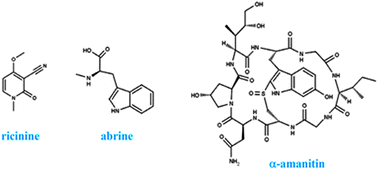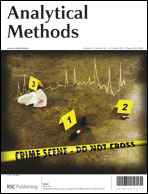Stability of ricinine, abrine, and alpha-amanitin in finished tap water
Abstract
Ricinine and abrine are potential indicators of drinking water contamination by ricin and abrin, respectively. Simultaneous detection of ricinine and abrine, along with α-amanitin, another potential biotoxin water contaminant, is reportable through the use of automated sample preparation via solid phase extraction and detection using liquid chromatography/tandem-mass spectrometry. Performance of the method was characterized over eight analytical batches with quality control samples analyzed over 10 days. For solutions of analytes prepared with appropriate preservatives, the minimum reporting level (MRL) was 0.50 μg L−1 for ricinine and abrine and 2.0 μg L−1 for α-amanitin. Among the analytes, the accuracy of the analysis ranged between 93 and 100% at concentrations of 1–2.5x the MRL, with analytical precision ranging from 4 to 8%. Five drinking waters representing a range of water quality parameters and disinfection practices were fortified with the analytes and analyzed over a 28 day period to determine their storage stability in these waters. The analytical signal from ricinine was observed to be stable for 28 days after being spiked into all tap waters investigated. The analytical signal for abrine and α-amanitin decreased within 5 h after these analytes were spiked into some drinking waters, but afterwards, remained stable for 28 days. The magnitude of the decrease correlated with common water quality parameters potentially related to sorption of contaminants onto dissolved and colloidal components within the particular water. Even with the decrease, the detectability offered by the method may be 100–1000 times greater than potential toxicological benchmarks, suggesting the utility of the method for all three analytes, with additional quality control precautions for abrine and α-amanitin.


 Please wait while we load your content...
Please wait while we load your content...